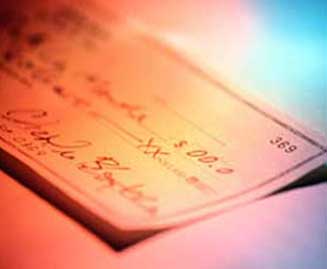The Con
Evolutio
Check C
tinuing
n of
onversion
Part I

—> Next Page
YOU MAY REMEMBER USING A PC WITH DOS DURING THE EARLY 80’S. During that time, PC shipment volumes
were modest. It was not until a graphical user interface was introduced (Windows) that PC shipment
volumes began to skyrocket. A market rule of thumb is that a simple solution always evolves and is
accepted as the standard. Today there is an immense amount of confusion and numerous offerings
related to electronic check conversion. This article will summarize several of the conversion
offerings being marketed and will ask questions that those of us in the payment industry should ask.
Although the volume of checks has diminished slightly during the last few years, checks remain the king
of payment. In 1999, more than 19 billion checks were written at the point-of-sale. Per the American
Banker, the cost of handling checks and losses associated with checks totaled $23 billion in 1999,
representing more than $1.00 in cost per check accepted at a point-of-sale counter. It’s no surprise
that many businesses are eager to adopt electronic check conversion. When checks are converted from
paper into an electronic transaction format, handling and transaction costs decrease and the
percentage of successful collections increases.
Electronic check conversion
Electronic check conversion is an electronic alternative for merchants who accept checks at the point-of-sale for goods and services. A consumer presents a merchant with a completed or blank check. The merchant runs the check through an electronic reader (a MICR reader), capturing the bank account information on the check as well as the check serial number. The merchant then returns the check to the consumer marked or stamped “VOID.” The consumer signs a receipt authorizing the electronic debit